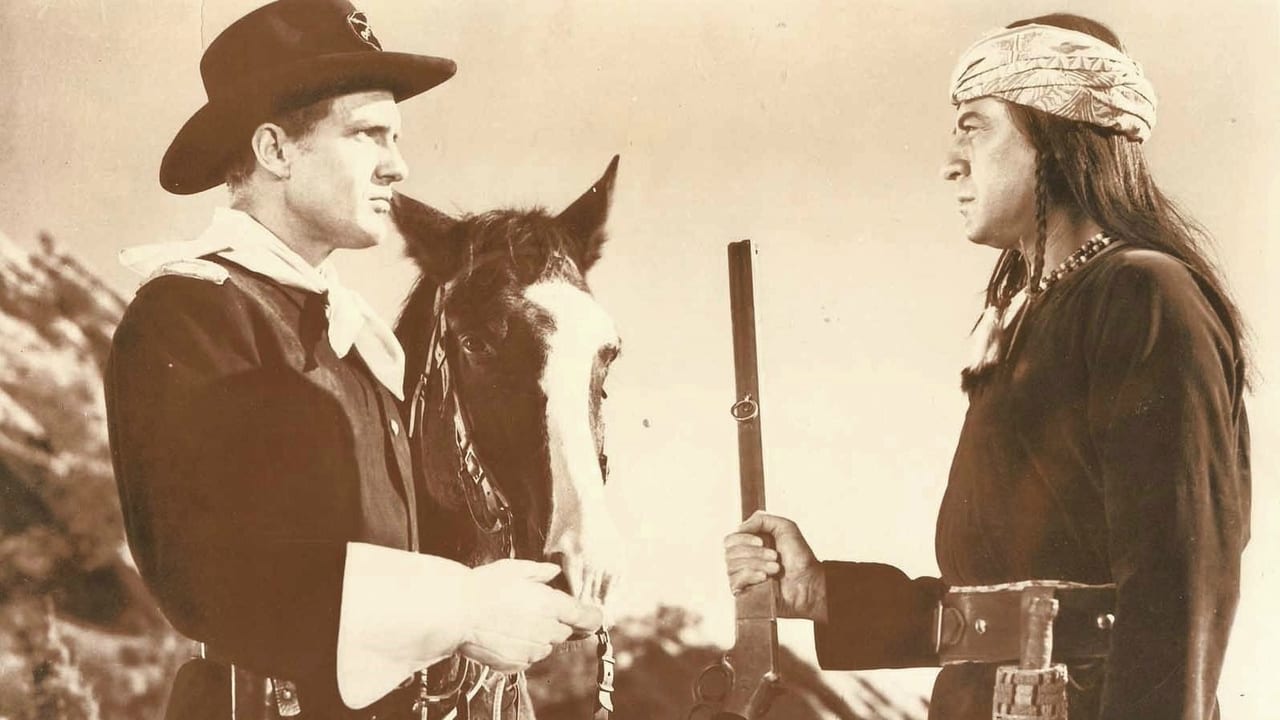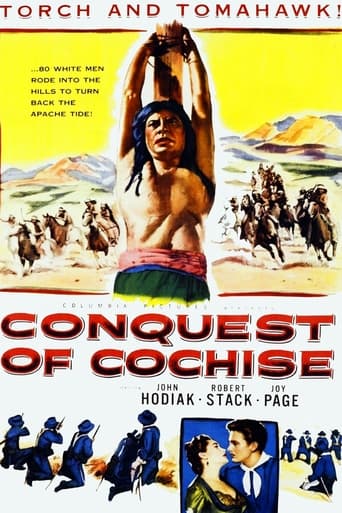



It's the kind of movie you'll want to see a second time with someone who hasn't seen it yet, to remember what it was like to watch it for the first time.
View MoreThe film's masterful storytelling did its job. The message was clear. No need to overdo.
View MoreThe film may be flawed, but its message is not.
The storyline feels a little thin and moth-eaten in parts but this sequel is plenty of fun.
View MoreI remain staggered when contemplating the inconsistency of William Castle's direction. My being boggled is seemingly rooted in Castle's implementation of two stylistic systems - malformed 'Twins' as it were. The Arnie isn't present in this outing. The "Devito" system is in full force with passive direction that features a tableau frontality dominant in the staging/blocking and camera positioning that succumbs to the idea that action should pass through it or track it in the most linear fashion. Like some of the Boston Blackie films, groups of characters are staged symmetrically creating an evenness like a Moe Howard bowl cut. Hackneyed quips and stilted performances abound. I believe the AFI archival notes on the film remark that the uniforms didn't fit historically. The stereotyping throughout Conquest of Cochise would fit adequately if you upped the action sequences in quantity and quality. The stereotyping could thus be rendered parodical cartoon or comic-strip homage, and vice-versa. The authorial voice of Castle is mute in this film and sequences are connected with sterile methodical execution. As such, the 4th Wall stands strong and the story is required to tell itself. The story itself is poor and the characterization does nothing to create spectator investment. Too much melodrama and not enough action renders a comic strip story into a tepid soap opera. Romantic subplots are developed as filler and not as focused torrid affairs. The talkiness is so overt that I have to wonder whether this churned out "B" historical Western was not produced solely to serve necking teens who needed a dark anonymous escape for a couple of hours. The ethnography of this film is bunk for a contemporary audience and perhaps outdated even at the time of its release. Were these Katzman-Castle history-drama productions simply gimmicks in service of a romantic subculture among audiences? I will admit that it would be easy to pay full attention to my lover's lips and blouse buttons with Conquest of Cochise playing - there would be no chance of a distraction.
View MoreAgreeable but underrated B-movie about the famous Indian leader , being set on spectacular landscapes and attempts to adhere to historical facts concerning his life . History comes alive in color by Technicolor with passable actors and adequate action . 1853 an Army Major named Tom Burke (Robert Stack , future Elliot Ness in The untouchables) along with Capt. Bill Lawson (John Crawford) have been sent to Tucson to agree peace with the Indians. He is successful with Cochise (John Hodiak : Lifeboat , Battleground) , the Apache leader, but Cochise is unable to get the Comanches to make peace treaty . The Apaches then turn back a raid by the Comanches and white men rode into the hills to turn back the Apache tide . The cavalry officer tries to keep a lid on a volatile situation when Indian leader Cochise is being prodded into starting a warn . There is a man in Tucson that wishes the Indian war against the cavalry to go on and when a stray Army rifle is discovered and it murders Cochise's spouse, it appears the Apaches will break the peace treaty . Later on , the daughter (Joy Page who worked in Casablanca) of a Mexican wealthy owner is kidnapped by Indians and Cochise fall in love with her .There are wonderful outdoors shot on spectacular territory and it displays action , shootouts, violence and though sometimes is slow-moving , isn't tiring neither dreary , sustaining the interest for quite a while . The movie also portrays the sensitive side of the Native American character though is dramatically slack and some moments there's nothing left to maintain viewer involvement . The film states that there were thousands Apache warriors at war in Arizona, when in fact was in the entire state and never more than several hundred fighting the white settlers and the US Army at any one time . This Indian-on-the-warpath tale is based on historical character and real events : Cochise and and the Gadsden Purchase 1853 that just brought part of Mexico into the United States . The motion picture didn't obtain success and resulted to be mediocre at box office , in spite of the appropriate sets , glimmer cinematography in Technicolor by Freulich and atmospheric musical score ; being filmed on location in Santa Clarita, Corriganville, Ray Corrigan Ranch, Simi Valley, Vasquez Rocks Natural Area Park California, USA .This low-budgeted motion picture was professionally directed by William Castle . He was an expert craftsman with some of the all-time great schlock names serving as the producer Sam Katzman and fondness for gimmicks as proved in his successful terror films such as House of haunted hill , The Tingler , Mr Sardonicus , Strait-jacked , Homicidal , Macabre and 13 Ghosts . Castle emulated Alfred Hitchcock , this included the practice of appearing in the trailers, and even making cameo appearances in his films . Furthermore , he made several Western such as 1955 Duel on the Mississippi , 1955 The Gun That Won the West ,1955 El Americano , 1954 Masterson of Kansas , 1954 The Law vs. Billy the Kid , 1954 Jesse James vs. the Daltons , 1954 Battle of Rogue River , 1953 Fort Ti , 1951 cave of outlaws. Rating : 5'5 . Acceptable and passable .
View MoreConquest of Cochise (1953)** (out of 4) Another Castle Western from Columbia certainly sticks to its "B" origins but there are a few interesting ideas that make it worth sitting through, although no one should expect a classic. Set in 1953 Arizona, Maj. Tom Burke (Robert Stack) wants to avoid a war between whites and Indians but a greedy Mexican wants both sides to fight and kill each other off. Indian Cochise (John Hodiak), on the other hand, wants peace but his people begin to pressure him into fighting this war. This film certainly doesn't have enough going for it to recommend to all people but I think those who enjoy "B" Westerns might find enough entertainment in its 70-minutes to make it worth watching. The film has way too much talk during the early parts but the final fifteen-minutes really pick up and end up packing a very strong punch. We start off when Cochise is sentenced to three tortures with one being bathed in hot steam and another impressive sequence where he's tied to a pole while the other Indians ride their horses up to him and slice him up with knives. This sequence doesn't contain anything too graphic but the editing and way it was directed makes it quite effective. We fall this up with a big battle scene that has the expected gunshots, bodies falling and of course the wild horse chases. Director Castle is best known for his horror films and most of them were in B&W but these early Westerns he did at Columbia gives you the chance to see him work in color and he certainly takes advantage of it. This movie looks like a coloring book because of all the vivid colors that are constantly on display. Whenever a set is on display it's got as many colors as they could possibly put in and this is a plus as there's always something to look at. Stack is pretty good in his role as I enjoyed the laid back approach he brought the character. It seems like the majority of the budget went to painting Hodiak red but he too is good in the role and gives it a certain passion that you can feel. The rest of the cast are pretty much what you'd expect in a film like this in terms of performances and character. Sam Katzman served as producer so that should pretty much tell you everything you'd need to know. Again, there's nothing overly special here but the final fifteen-minutes are well worth watching.
View MoreI saw this movie when it was new, back in 1953, and the only thing I remembered about it was the final reel in which Cochise (John Hodiak) is sentenced to suffer three tortures: (1) scalded by hot steam, (2) sliced with knife blades, and (3) burned by fire. Many years later I saw the movie again and, what do you know?, the only thing worth remembering about it is that final reel. Robert Stack makes a serviceable, though undistinguished, hero, and the color photography has that "brightness" so common in early 1950's movies.
View More